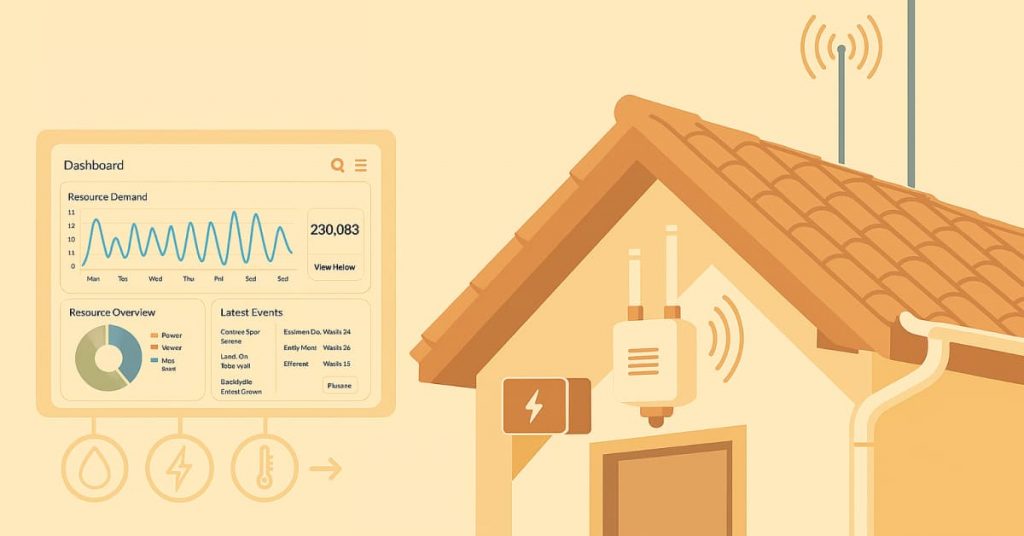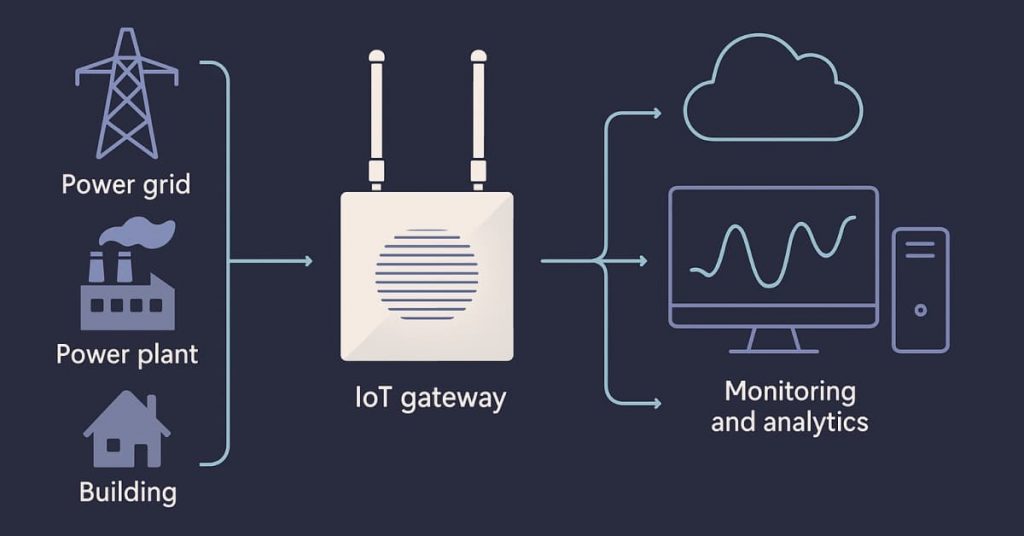
The global energy sector is rapidly evolving, with smart grids emerging as the cornerstone of modern utility management. These advanced systems rely heavily on IoT (Internet of Things) gateways to ensure seamless communication, data transmission, and optimization of energy distribution. IoT gateways serve as critical components in smart grid infrastructure, enabling real-time insights, enhanced efficiency, and improved decision-making. This article explores why IoT gateways are indispensable for smart grid optimization and the benefits they bring to power utilities.
How IoT Gateways Improve Smart Grid Operations
1. Enabling Real-Time Communication
IoT gateways facilitate the continuous exchange of data between smart meters, sensors, and central control systems. This real-time communication allows utilities to:
- Monitor energy flow across the grid.
- Detect anomalies, such as outages or overloads, instantly.
- Optimize energy distribution to meet fluctuating demands.
2. Enhancing Energy Efficiency
By integrating IoT gateways into smart grids, utilities gain access to actionable data that helps reduce energy waste. Gateways enable:
- Dynamic Load Management: Adjusting energy supply based on real-time consumption patterns.
- Peak Demand Mitigation: Encouraging energy usage during off-peak hours through dynamic pricing models.
3. Supporting Advanced Metering Infrastructure (AMI)
IoT gateways are essential for the seamless operation of AMI systems, which provide:
- Accurate utility usage data for billing and analysis.
- Two-way communication between utilities and consumers for better energy management.
4. Facilitating Renewable Energy Integration
IoT gateways streamline the incorporation of renewable energy sources, such as solar and wind, into the grid. They:
- Monitor renewable energy production in real time.
- Balance supply and demand to ensure grid stability.

Benefits of IoT-Enabled Smart Grid Optimization Systems
Improved Reliability
IoT gateways enhance grid resilience by enabling:
- Predictive maintenance to prevent equipment failures.
- Rapid detection and resolution of outages.
Cost Savings
By optimizing energy distribution and reducing operational inefficiencies, IoT-enabled smart grids lower costs for both utilities and consumers.
Environmental Impact
Smart grids with IoT gateways support sustainable practices by:
- Reducing energy wastage.
- Promoting the use of renewable energy sources.
Better Consumer Engagement
Two-way communication enabled by IoT gateways allows consumers to:
- Monitor their energy usage in real time.
- Make informed decisions to reduce consumption and costs.
Technologies Used in Smart Grid IoT Solutions
1. LoRaWAN (Long Range Wide Area Network)
- Provides low-power, long-range communication for IoT devices.
- Ideal for large-scale deployments in urban and rural areas.
2. Cellular Connectivity (4G/5G)
- Ensures high-speed data transmission for time-sensitive applications.
- Suitable for densely populated regions requiring robust communication networks.
3. Edge Computing
- Processes data locally at the gateway level, reducing latency and bandwidth usage.
- Enhances real-time decision-making capabilities.
4. Advanced Encryption Protocols
- Ensures secure data transmission to protect against cyber threats.
- Maintains the integrity of sensitive utility information.

Best IoT Gateways for Monitoring Smart Energy Grids
1. Jooby IoT Gateways
- Features: High reliability, long-range communication, and easy integration with existing systems.
- Applications: Ideal for energy distribution networks and renewable energy monitoring.
- Explore: Jooby IoT Gateways
2. Multi-Utility Monitoring Gateways
- Features: Support for electricity, water, and gas monitoring in a single platform.
- Applications: Designed for utilities managing diverse resource networks.
3. Industrial-Grade IoT Gateways
- Features: Rugged designs for harsh environments, with support for multiple IoT protocols.
- Applications: Perfect for large-scale industrial smart grid systems.
How to Improve Energy Efficiency with Grid Monitoring Gateways
- Deploy Comprehensive Coverage Ensure IoT gateways are strategically placed to cover all critical areas of the grid, minimizing blind spots.
- Leverage Predictive Analytics Use data collected by gateways to forecast energy demands and optimize distribution in advance.
- Integrate with Renewable Sources Utilize IoT gateways to monitor and manage the integration of renewable energy into the grid.
- Encourage Consumer Participation Provide consumers with access to real-time data through apps or dashboards, empowering them to adopt energy-saving practices.
Why Choose IoT Gateways for Smart Grid Optimization?
Scalability
IoT gateways can handle large volumes of data and connect thousands of devices, making them suitable for grids of any size.
Future-Proof Technology
With compatibility for emerging IoT protocols and technologies, IoT gateways ensure long-term value and adaptability.
Enhanced Decision-Making
Real-time insights and predictive analytics enable utilities to make informed decisions, improving grid performance and reliability.
Final Thoughts
IoT gateways are integral to the success of smart grids, providing the communication backbone for efficient utility management. Their ability to enhance energy distribution, support renewable integration, and improve consumer engagement makes them an essential investment for modern utilities.Invest in cutting-edge IoT gateways like those offered by Jooby to optimize your smart grid operations and drive sustainable growth.
